
|
||
|
Portland art blog + news + exhibition reviews + galleries + contemporary northwest art
|
||
Laurie Herrick retrospective 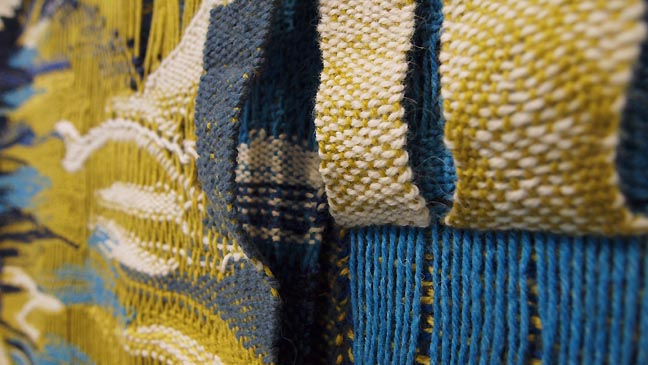 Detail of Laurie Herrick's Crater, 1969 (all photos Jeff Jahn unless otherwise noted) This Summer I sense that many Portlanders feel a little robbed... no it is not the Juneuary we just experienced. Personally, I'll take 65-72 degree days that over the blast furnace much of the country has experienced. Instead, it's the lack of a strong, in depth look at the arts that are the hallmark of major museums. In fact PORT's writers have been traveling to other cities to catch great shows like Lee Ufan at the Guggenheim or Picasso/Braque at the Modern Fort Worth, etc. So now that Summer is finally here in the very manageable 80's we still want to dive into a museum for some cool contemplation. What are the options? 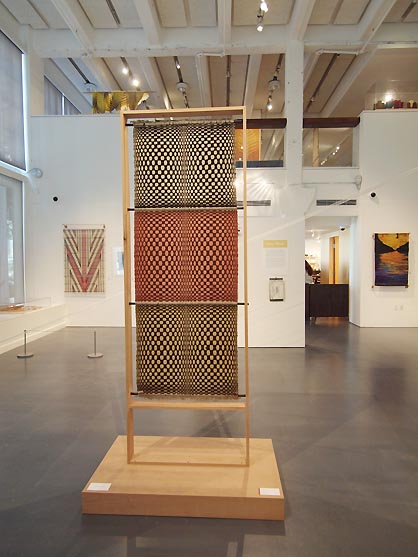 Exhibition view: Laurie Herrick Weaving, Yesterday, Today and Tomorrow This is the last day but the Museum of Contemporary Craft has pretty much the only game in town with it's very engaging retrospective of mid 20th century designer and weaver Laurie Herrick (1908-1995). Design was always important for the young, initially LA based Herrick who first developed men's neckties and worked as a model in her youth before becoming a weaver in Martha Pollock's design studio in 1940. Pollock's studio specialized in developing commercial uses for new fibers by companies like Dupont and supplied Hollywood films. Pollock would have been in competition with even more well known designers like Dorothy Liebes (who designed fabrics for the likes of Frank Lloyd Wright). 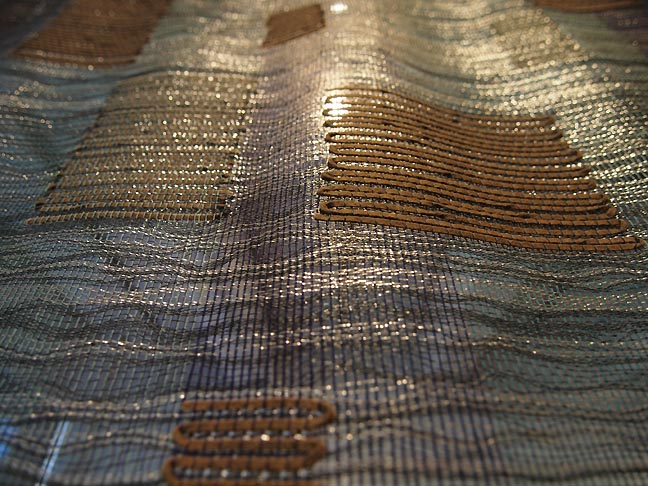
detail of Rainforest (1950's) After opening her own Beverly Hills design studio in 1950 Herrick moved to Portland in 1954, bringing her depth of experience to an area where she could be more of solo practitioner. Early on she began doing mostly ecclesiastical commissions and also taught for 20 years at the Oregon School of Craft (today's OCAC). The exhibition itself is relevatory, non-chronological and more grouped thematically (Nature, Op art and couture) with a few works by Herrick's contemporaries for context. Herrick was particularly gifted in her use of texture and structure as evidenced by her interpretations of Victor Vasarely's Op Art and even more so through her own interpretive often Klee-like natural scenes. This nature motif sets her apart from Liebes who achieved notoriety through working in the more male dominated architectural world as a patternist, despite her stand alone pieces being her most compelling. Today, there are major female architects like Zaha Hadid and Jeanne Gang but back them it was incredibly rare (I still find architecture to be an exceedingly masculine culture though). Considering those times it makes sense Herrick would seek a different path. 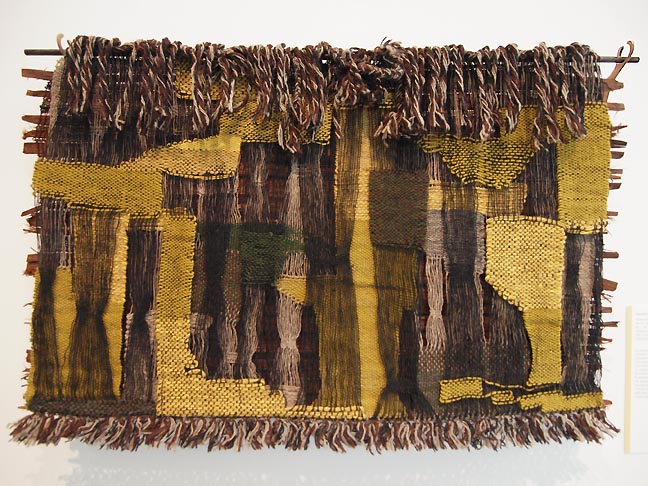 Redwood V (1969) In particular, the open warp designs like Redwood and Crater were highly idiomatic works from 1969, just as sculptural and structural as they were flat... I think of a piece like this as a kind of portable architecture more than more traditional tapestry. Redwood V in particular may be the most striking work in the show as it uses redwood staves structurally, which recursively parallels both the redwood trees as material and the weaving tools she would employ to make her works. Herrick always sought to do what machines could not and believed more repetitive work was more ideally suited to machines. 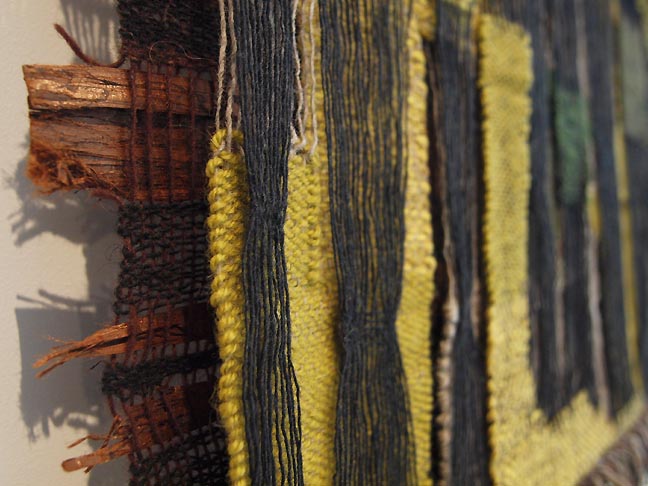 detail of Redwood V Overall, I find these open warp works to be her most original because of this sophisticated surface/support and philosophical conflagrations and exemplify poetry in materials that found their own voice more than the otherwise excellent Vasarely projects which came shortly after. 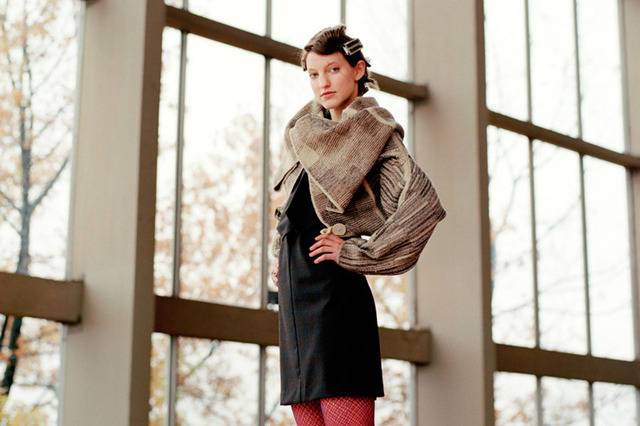
Photo Jake Stangel The open warp works lead to her excellent garment designs (all woven on loom) of the1970's and into the 1980's and the show gets high marks for bringing about a current collaboration with current designer Adam Arnold, fashion photographer Jake Stangel and stylist Galen Amussen worked together to bring Herrick's designs into the present consciousness. It's a brilliant curatorial move that shows just how this craft museum is thinking more like a design and craft institution (designers are by nature media savvy and collaborative). It is also a strength of the exhibition that Herrick's working sketches, correspondences and design documents are also on display providing the weavers of today access to her process. 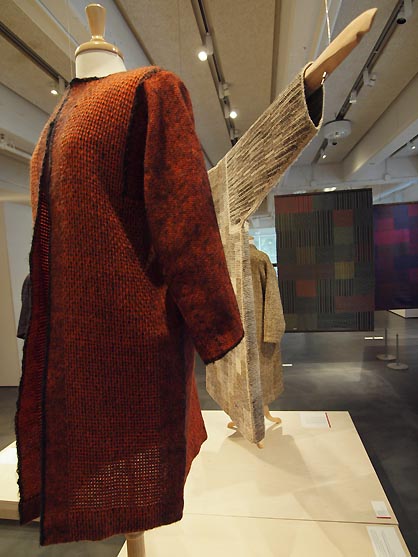
Installation view (left) Laurie Coat (1977) It is a tradition and a weavers legacy (like a great violinist) lives on partly through the students they pass their knowledge to, not simply their own performances. For example, a great violinist like Issac Stern mentored YoYo Ma and Itzhak Perlman and likewise, Herrick (who like Klee was a violinist herself) taught at the Oregon School of Craft. In fact, money for her commissions went to purchase looms for the school (most of which are still in use today). The exhibition makes good on this tradition by having 5 contemporary weavers as artists in residence; am Patrie, Mackenzie Frère, Christy Matson, Elizabeth Whelan and Deborah Valoma. I like this idea of a design and craft museum as a kind of workshop designed to pass on knowledge, not just a display opportunity (though it is a tad overfull). 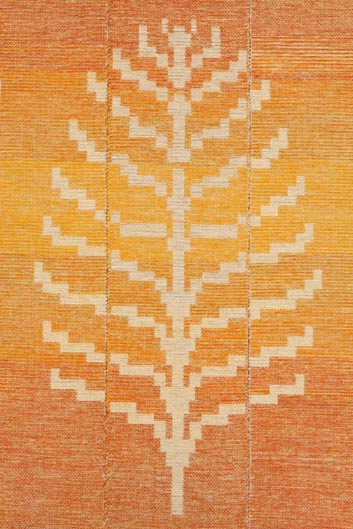 Tree of Life 1/4 scale (1968) Photo Dan Kivitka 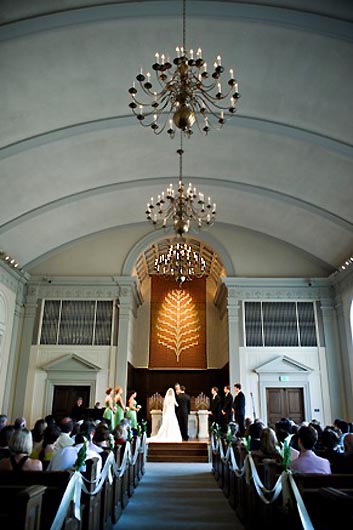
Photo of Herrick's full size Tree of Life installed shortly after it was completed Perhaps it is telling that Herrick's highest profile comission was the Tree of Life for the First Unitarian Church is still on display (in what is now called the 1st Presbyterian church) The design was extremely successful, based on forms such as the menorah and the Norse tree of life Yggdrasil (particularly the Överhogdal tapestries) so that even a change in denomination did not prompt its removal. How often does that happen? A scaled down preparatory version has become the exhibition's signature piece... perhaps because its graphic design is just as strong as the weaving? This is exactly the type of show that worldly Portlanders are hungry for and are in short supply this summer. This exhibition presents a novel and historical artist in her first retrospective, while revealing a great deal of curatorial agility in the displays and scope of the exhibition. 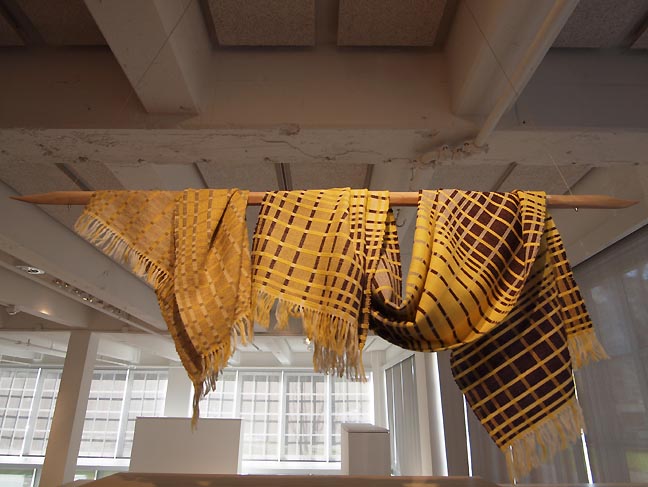 Shawl and Sample (1976) Go and see it. It is your last chance, though somehow I feel like we will be seeing a lot more of Herrick in the future. Such is the effect of a good retrospective, good things come out of the woodwork. Posted by Jeff Jahn on July 30, 2011 at 10:45 | Comments (0) Comments Post a comment Thanks for signing in, . Now you can comment. (sign out)
(If you haven't left a comment here before, you may need to be approved by
the site owner before your comment will appear. Until then, it won't appear
on the entry. Thanks for waiting.)
|
| s p o n s o r s |
 |
 |
 |
 |
 |
 |
 |
 |
 |
 |
 |
 |
 |
 |
 |
 |

|
Site Design: Jennifer Armbrust | • | Site Development: Philippe Blanc & Katherine Bovee | |

